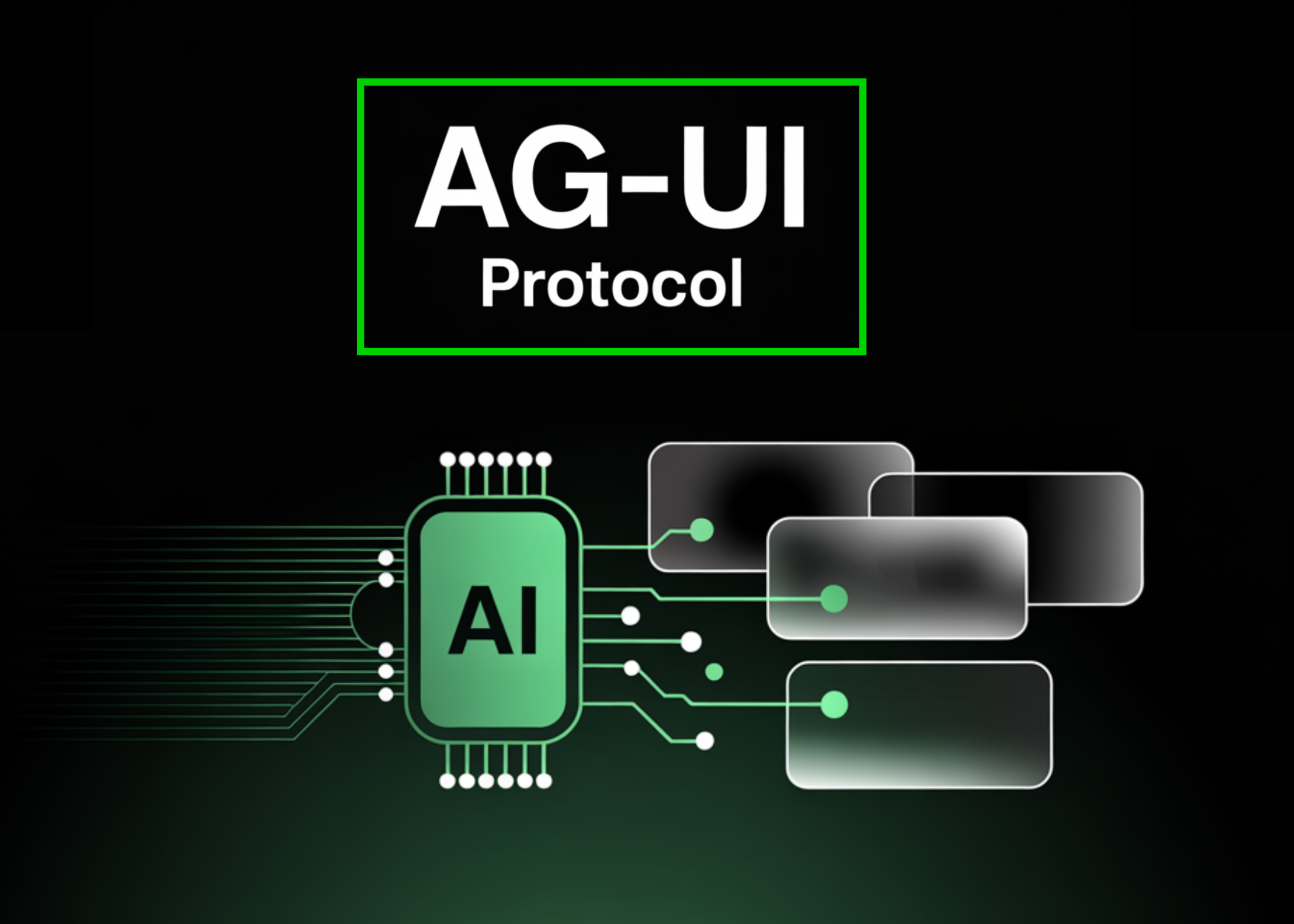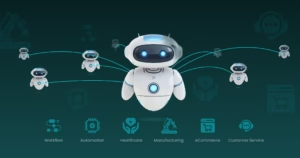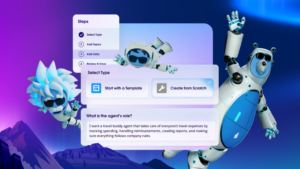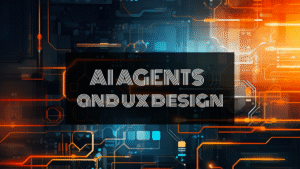Bringing AI Agents Into Any UI
Introduction
In recent years, AI has moved from being an experimental technology to becoming a practical companion across industries. From chatbots and copilots to multi-agent systems that handle complex workflows, AI agents are gradually embedding themselves into daily digital interactions. However, one of the biggest challenges organizations face is not just creating intelligent agents—but bringing them into existing user interfaces (UI) seamlessly.
This article explores how AI agents can be integrated into any UI, what design principles matter, the technological enablers, real-world use cases, and the potential future of human-AI interaction.
Understanding AI Agents
Before we dive into integration strategies, it’s important to clarify what AI agents are.
An AI agent is a system that perceives its environment, reasons about it, and takes actions autonomously to achieve goals. Unlike simple chatbots, agents are task-oriented, adaptive, and often operate in multi-step workflows. Examples include:
-
A customer service bot that not only answers queries but also modifies account details.
-
A sales assistant that predicts customer intent and proactively suggests offers.
-
A productivity agent inside an email app that drafts responses and organizes schedules.
When these agents are embedded into familiar interfaces, they reduce friction for users and increase adoption.
Why Bring AI Agents Into Any UI?
1. Meeting Users Where They Are
Users already spend most of their time inside applications like email, spreadsheets, CRMs, or messaging tools. Instead of forcing them to learn a new AI dashboard, embedding agents directly into their workflow ensures natural adoption.
2. Enhancing Familiarity
People trust interfaces they already use. By augmenting these interfaces with AI capabilities, companies can provide power without overwhelming users.
3. Accelerating Productivity
When agents live within a UI, users can delegate repetitive tasks instantly. For example, an AI inside a text editor can fix grammar, summarize content, or suggest improvements without switching apps.
4. Democratizing AI Access
Embedding AI into multiple UIs allows businesses to extend AI benefits to non-technical audiences, making AI part of everyday work rather than a specialized tool.
Key Design Principles for AI-Enabled UIs
When bringing AI agents into UIs, the focus should not be on technology alone but on human-centered design.
1. Transparency and Explainability
Users need to understand why an AI took a certain action. For instance, if an AI assistant suggests rescheduling a meeting, it should also show the reasoning—like conflicts in the calendar.
2. Context Awareness
AI agents should not act in isolation. They must adapt to the context of the UI. For example, in an e-commerce site, the AI should focus on product recommendations, not generic conversation.
3. Seamless Interaction
The AI’s entry point in the UI must feel natural—whether it’s a sidebar, tooltip, or floating button. Overly intrusive designs can annoy users and reduce trust.
4. Control and Override
Users should always be able to override AI suggestions. This ensures autonomy and prevents frustration when the AI gets things wrong.
5. Progressive Disclosure
Instead of overwhelming users with dozens of AI features at once, the UI should reveal capabilities gradually based on use patterns.
Technological Enablers
Bringing AI agents into any UI requires a combination of technologies:
1. APIs and SDKs
APIs allow agents to connect with applications. For example, an AI scheduling assistant uses Google Calendar’s API to read/write events.
2. Embedding Models
To understand UI content (like text, buttons, or fields), embedding models convert elements into machine-readable vectors, enabling contextual reasoning.
3. Large Language Models (LLMs)
LLMs provide the core reasoning and conversation engine behind agents, enabling natural communication.
4. Middleware Integration
Middleware platforms like LangChain, AutoGen, or Pega’s AI integration tools allow developers to orchestrate multi-agent behaviors inside UIs.
5. Cross-Platform Frameworks
Electron, React, Flutter, and other frameworks make it easier to build UIs where agents can live consistently across devices.
6. Real-Time Event Handling
Event-driven architectures let agents react instantly to user actions, such as typing in a text field or clicking a button.
Methods of Embedding AI Agents Into UIs
1. In-App Assistants
Many applications now feature side panels or bottom bars that house an AI assistant. Example: Microsoft Copilot in Word and Excel.
2. Contextual Tooltips
Agents can provide recommendations directly inside fields. For instance, Gmail suggests auto-complete replies as you type.
3. Floating Widgets
AI widgets float across apps and provide cross-functional intelligence. Example: Windows Copilot that works across the entire OS.
4. Command Palettes
A universal command palette allows users to trigger AI-powered actions inside any UI. Example: VS Code’s AI code suggestions.
5. Embedded Workflows
Instead of just giving suggestions, agents can execute workflows. For example, inside a CRM, an AI can draft follow-up emails, log calls, and update deal statuses automatically.
Real-World Examples
1. Microsoft 365 Copilot
One of the most successful integrations of AI agents into familiar UIs. Word, Excel, Outlook, and Teams now feature embedded AI copilots that help with summarization, data analysis, and task automation.
2. Notion AI
Notion integrated AI directly into its note-taking interface, allowing users to summarize, reformat, or brainstorm inside documents.
3. Salesforce Einstein
Embedded AI agents inside CRM dashboards assist with lead scoring, predictions, and customer insights.
4. Adobe Firefly
Creative tools like Photoshop now feature AI agents that live inside the UI to generate images, remove objects, or adjust designs.
5. Slack GPT
Slack integrates AI directly into conversations, enabling summarization, auto-responses, and workflow automation within the chat interface.
Benefits for Businesses
-
Higher Adoption Rates – Users don’t need to learn new tools.
-
Efficiency Gains – AI embedded directly in workflows reduces context switching.
-
Data-Driven Insights – Agents inside UIs can capture valuable context for better personalization.
-
Competitive Edge – Companies that integrate AI agents into their products stand out in the marketplace.
Challenges and Risks
-
Privacy Concerns
Agents embedded in UIs often require access to sensitive data. Ensuring strong data governance is critical. -
Over-Reliance on AI
Users may delegate too much to agents, reducing critical thinking and oversight. -
UI Overload
Poorly integrated agents can clutter the UI and frustrate users. -
Security Threats
If an AI agent is compromised, attackers may gain access to applications where it is embedded. -
Bias and Errors
Agents may still make biased or incorrect decisions, which can impact users negatively.
Future of AI-Enabled UIs
The next generation of UIs will likely be AI-first, not just AI-augmented. Some trends include:
-
Voice-Driven Interfaces – Agents will interact via voice across apps.
-
Proactive Agents – Instead of waiting for user prompts, agents will act proactively (with consent).
-
Cross-App Intelligence – Agents won’t be limited to one UI but will work across apps seamlessly.
-
Personalized Adaptive UIs – UIs that change dynamically based on agent insights and user preferences.
-
Multi-Modal Interaction – Agents that use text, images, video, and gestures inside UIs.
Conclusion
Bringing AI agents into any UI is not just a technical challenge—it’s a design philosophy. The goal is to empower users, not overwhelm them. Done right, AI-enabled UIs can transform productivity, creativity, and decision-making across industries.
From Microsoft Copilot to Notion AI, we are already witnessing how seamlessly integrated agents redefine workflows. The future lies in context-aware, trustworthy, and human-centered AI agents that can live inside any interface—making technology truly invisible yet powerful.
For quick updates, follow our whatsapp –
https://whatsapp.com/channel/0029VbAabEC11ulGy0ZwRi3j
https://bitsofall.com/top-computer-vision-cv-blogs-news-websites-2025/
https://bitsofall.com/https-yourblog-com-building-ai-agents-is-5-ai-and-100-software-engineering/
Xiaomi Releases MiMo-Audio: A New Era for Speech Large Models
Physical AI: Bridging the Gap Between Artificial Intelligence and the Physical World






